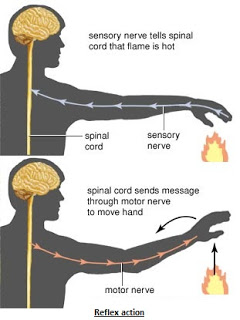Elementary motor reflexes
Whenever the physiological study of nervous system starts in earnest, easily accessible regions peripheral sensory and motor elements and their grouping in elementary reflexes were examine first. As theories are built on what is known, supposed the roles of central reflexes, make animals reactive, reflex driven machines. In biology, modes of engine have been demonstrated as chains of reflexes that each movement generates suitable sensory stimuli to elicit chitectures with a processor working via series of instructions stored in memory independently. Rather, the motor programs represent states recognized in the nervous system which generate consistent, task-related patterns of intrinsic activity and responses to stimuli. Patterns are high-level shorthand for the function of parallel, dispersed physiological systems.

This section focuses on the implementation of biological motor programs. Neurophysiology and biomechanics, neuroanatomy supported by the modeling and molecular methods, give data. Cybernetics, the formal study of the input-output characteristics of a system by which systems can range from single neurons in entire animals, gives systems-level analysis tools. It is the theory of dynamical systems, that seeks collective variables summarizing emergent properties of complex systems and control parameters which influence their behavior. Timing and continued walking leg movements were recognized to reflexes in response to modifications in the location of the leg, loading, and balance signals during the step, however these conceptual models have never been quantitatively simulated. In psychology, the theory was chaining same response. Such formulations depend on the response have been extended in ethology interactions among individuals and psychology to behaviorism.